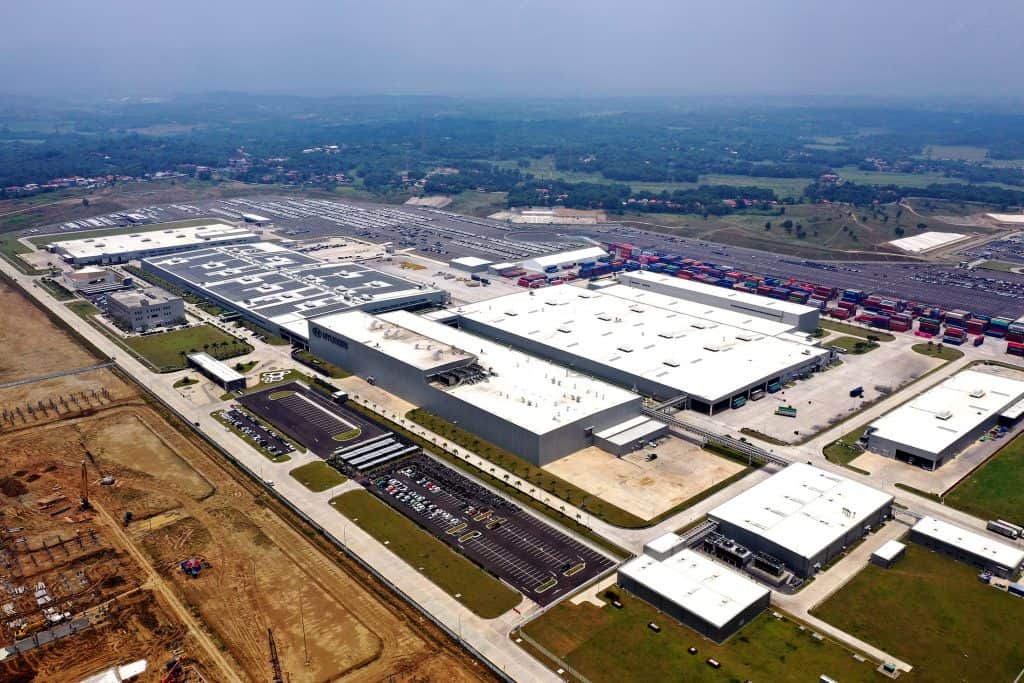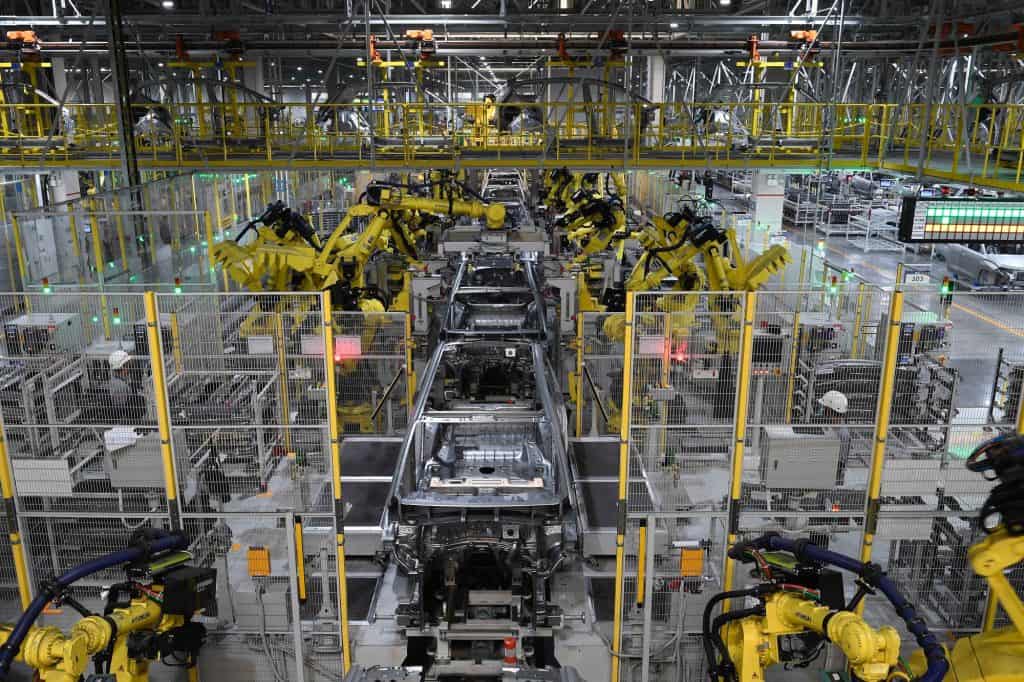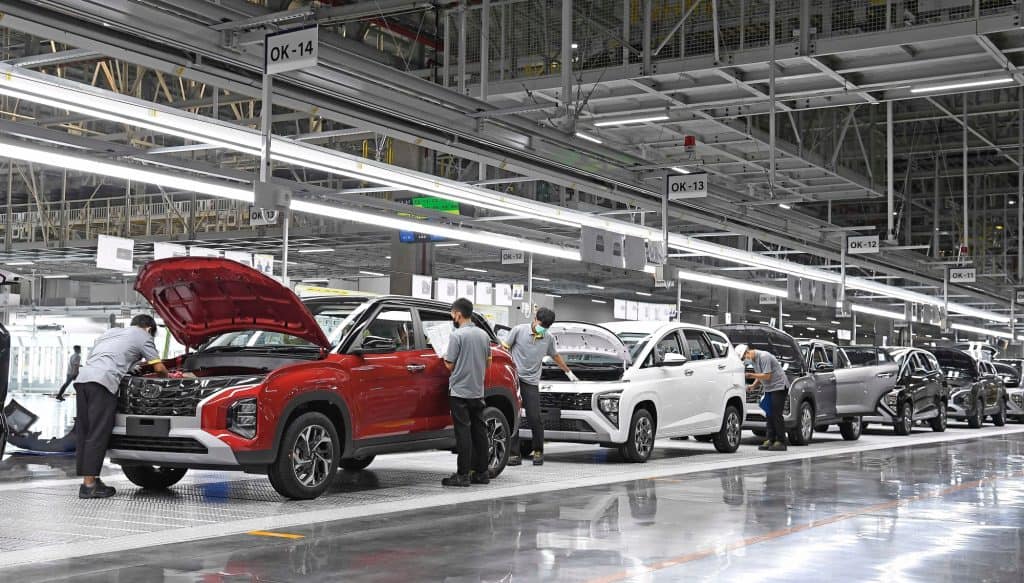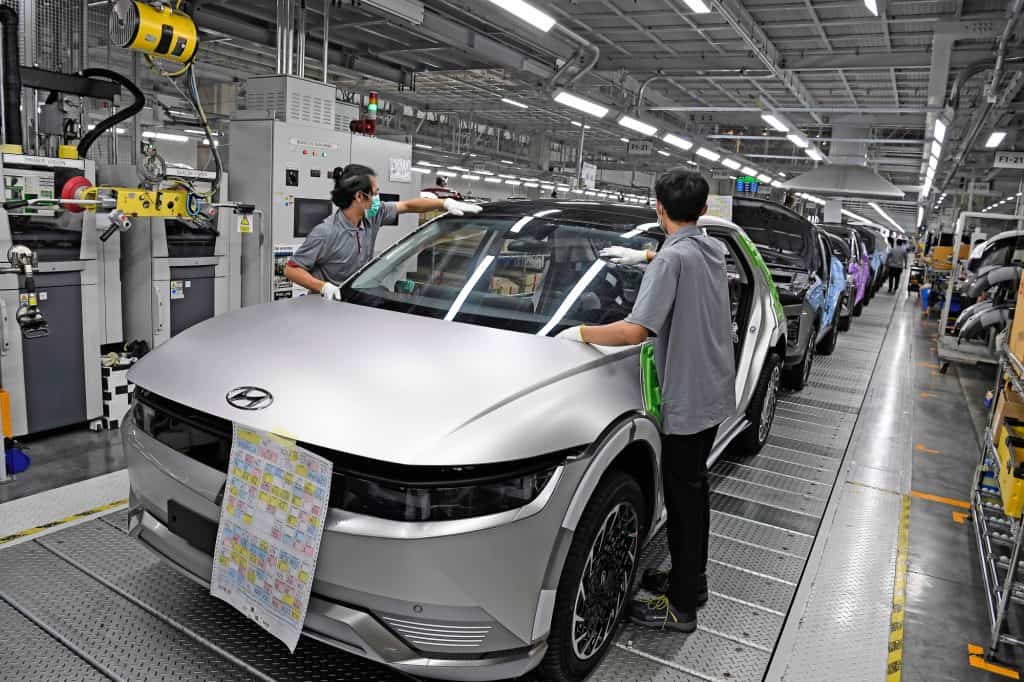Fresh from witnessing Hyundai’s impressive model reveal at the recently concluded Gaikindo Indonesia International Auto Show, our team was given an all-access pass to literally see the big picture of the brand’s might in Indonesia, and its significance in their Southeast Asia operations. Built on 77.6 hectares of land in Cikarang, just 40 kilometers from its capital, Jakarta, Hyundai Motor Manufacturing Indonesia is indeed a gargantuan showcase of the Korean giant’s production capability and commitment to sustainable development and vision of “Progress for Humanity.”
Inaugurated barely a year and a half ago, the HMMI plant’s initial 150,000 vehicle units per year output has already been hiked up to 250,000 units per year via a USD 1.55 billion boost from Hyundai Motor Company. Awe-inspiring as it is, it’s not all about size and performance though.

The manufacturing plant in Indonesia is Hyundai’s first, to produce BEVs (battery electric vehicles) in Southeast Asia with the Ionic 5, which is also the very first EV manufactured in the country. The company will ride on the strong wave of its EV sales, as its Ionic Electric and Kona Electric models made up the lion’s share of total EV sales in Indonesia with a whopping 87% in 2021.
This positive development also underlines Hyundai’s total commitment in supporting the Indonesian Government’s aggressive drive to expand the country’s EV ecosystem. They have actually started converting their fleet vehicles into EVs, and their target is to have 130,000 units done by 2030.
Hyundai is currently working with LG Energy Solutions in building a battery cell factory in Karawang, Indonesia, that will be fully operational by next year. The factory will definitely be a boon to Indonesia’s electrification drive, by keeping locally produced EV batteries in abundant supply. The Hyundai manufacturing plant will also source out batteries from the said factory, enhancing further the brand’s competitiveness in terms of their EVs’ pricing.

Mainly, the Hyundai Motor Manufacturing Indonesia plant produces the company’s strategic models for Southeast Asia, namely the Creta, the Santa Fe, and the Stargazer, including the new Stargazer X model that was unveiled at GIIAS. We navigated through the gargantuan complex by bus, going through some buildings for an impressive introduction to the facility and a vivid demo of their exemplary safety and sustainability practices (the plant instills proactive environment-friendliness by utilizing solar panels to supply a significant part of its electricity needs, and uses only water-based paints in its painting process), then we were eventually brought to the main plant.
I’ve seen quite a few predominantly automated automotive factories overseas, but the Hyundai Indonesia plant was of a different level and scale. Giant robot arms efficiently situated in segregated sections, sway, twist, dart, rotate, lift, and weld in perfect synchronicity at near-alarming speed, left us shaking our heads in fascination. All this amid the thundering sounds of slamming solid steel presses from their monstrous body-stamping machines- that are unsurprisingly, manufactured by Hyundai as well.
It’s easy to see how Hyundai as one of the largest automotive brands in the world, will progress from this point towards a sustainably electrified future. Evident in their nameplates powered by internal combustion engines (ICE) is their design, engineering and technological prowess, but more so on their BEV’s. But it’s reassuring to know that despite their manufacturing might, they are prioritizing mobility in accordance to what’s best for humanity.



